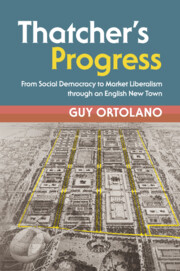Introduction
Published online by Cambridge University Press: 08 June 2019
Summary
Why, before selling council houses or denationalizing public industries, did Margaret Thatcher’s government begin to privatize Britain’s new towns? Thatcher’s Progress argues that the new towns represented the spatial dimension of the welfare state. Britain’s new towns program developed out of the garden city tradition, an approach to town and country planning that, during the early twentieth century, spread throughout the world. In the New Towns Act of 1946, the Labour government nationalized this dimension of town planning, leading to the designation of thirty-two new towns within a quarter century. This book focuses upon the most ambitious of these projects, Milton Keynes,in order to recast our understandings of social democracy and market liberalism. Rather than depicting social democracy as exhausted by the 1970s, the making of Milton Keynes reveals dynamic social democrats responding creatiely to changing times. And rather than locating the origins of market liberalism ever deeper in postwar history, this project illustrates the non-deterministic, but ultimately decisive, process through which market liberalism triumphed.
Keywords
- Type
- Chapter
- Information
- Thatcher's ProgressFrom Social Democracy to Market Liberalism through an English New Town, pp. 1 - 31Publisher: Cambridge University PressPrint publication year: 2019



